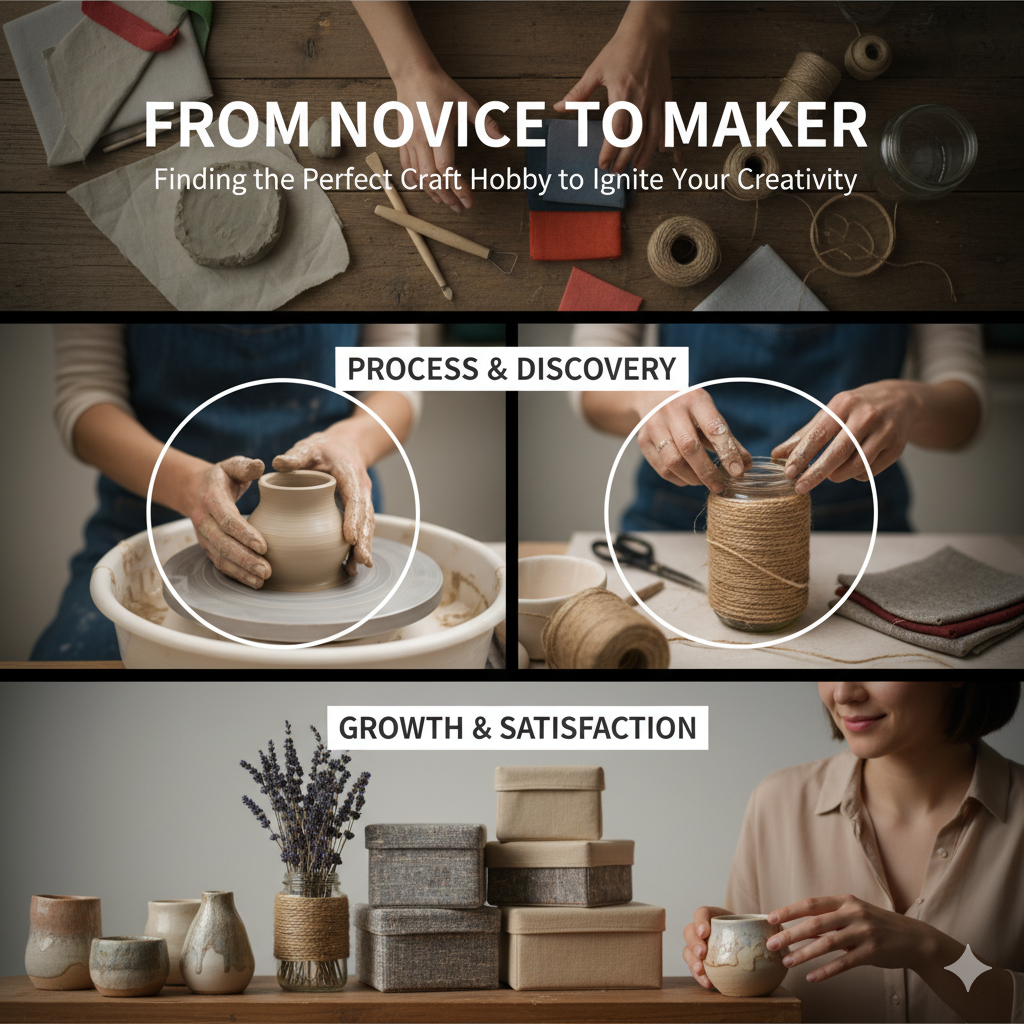
A profound, frequently unspoken thirst for concrete creation—the desire to transform an abstract concept into something tangible that you can hold in your hands—exists in our fast-paced, digital world. This is the maker movement’s main attraction. You are well suited for a craft hobby if you have ever had the desire to substitute screen time with building time but were unsure where to begin. Finding the ideal medium that appeals to your personality, engages your hands, and offers a therapeutic retreat is what will transition you from “novice” to “maker”—not having natural talent. The ideal craft is a straightforward journey that encourages sincere, concentrated play rather than a complicated destination.
You can identify your ideal creative match by understanding the distinction between approach and product. Think about clay art or hand-building ceramics if you are drawn to meditative, grounding pieces that stress texture and patience. You can slow down, focus, and transform a simple lump of soil into a sturdy, three-dimensional sculpture when you work with clay. It is a tactile pastime, and the process of molding and sculpting is a potent therapeutic tool. However, if structure, color, and repurposing appeal to you, try your hand at making your own home décor out of repurposed items. By enabling you to transform throwaway items—like old jars or boxes—into practical, stylish storage choices, this technique blends creativity with a sense of sustainable achievement.
Pushing past the early awkwardness is the toughest obstacle for every beginner, regardless of the craft they choose. Every expert began as a beginner who made awkward, unsatisfactory initial attempts. Removing the pressure to be perfect is the key. Make the commitment to short, low-stakes projects where the learning process, not the perfect result, is the exciting part. For example, before trying a complicated vase in clay art, concentrate on learning the fundamental pinch, coil, and slab techniques. In the same way, when upcycling, start with only covering a shoe box with cloth before working on a big piece of furniture. These little pledges boost self-esteem and keep the first slip from turning into a last deterrent.
In the end, the appropriate craft hobby is just the right tool, and creativity is a muscle that becomes stronger with practice. You can give your mind the essential haven by purposefully selecting a craft that fits with your need for tactile creation or organizational play. That initial restlessness is transformed into a fulfilling, long-lasting sensation of being a maker when one commits to a regular creative practice. The instant you allow yourself to just begin exploring, you begin your journey from novice to maker.
